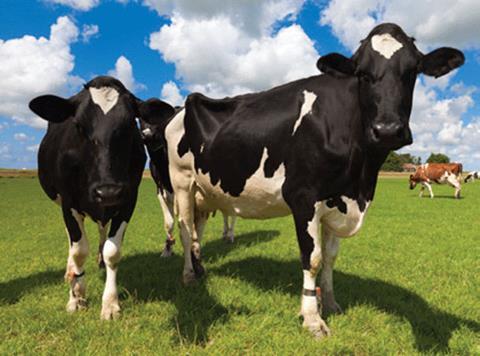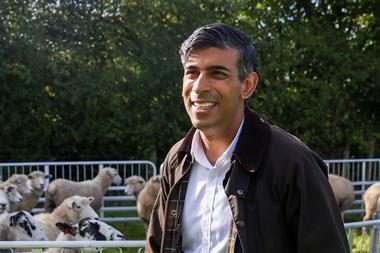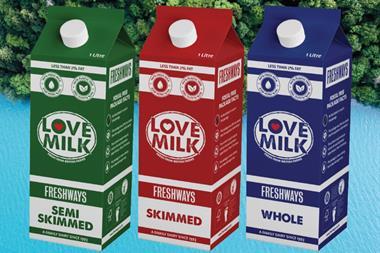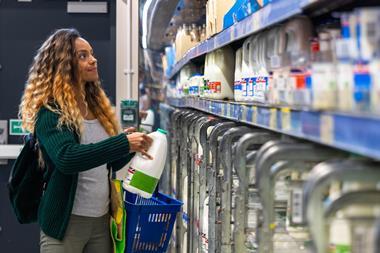
The record farmgate milk prices seen in 2022 have fallen dramatically since the new year, with a raft of recent cuts by major processors sending average prices plummeting.
Defra’s most recent UK average milk price stood at 51.51ppl in December. However, analysis of recent price cuts by Kite Consulting puts the current average at around the 45ppl level – representing a near 12% drop in little more than a month.
Amid a downturn in commodity prices – driven by reduced demand and forecasts that global production could increase by 1% in 2023 – the record prices that drove significant retail price inflation in dairy last year now look like a high-water mark.
Arla recently announced big cuts to its February milk price, down 2.65ppl to 46.57ppl for liquid producers, citing a reduction in consumer demand following “consistently high inflation”, which was driving shoppers to lower their overall basket spend.
“As consumer demand falls, milk volumes in the commodity market continue to increase, thus pushing commodity prices down further,” said Arla Foods amba board director Arthur Fearnall.
His comments echoed those of Müller, which just over a week ago said it would drop its March price for Müller Direct farmers by 3ppl to 43ppl, plus a 1ppl quarterly premium.
And many more, including First Milk, Saputo, Barbers and Freshways, have cut their upcoming prices by at least 3ppl, according to Kite Consulting’s analysis, with First Milk’s farmer director and vice-chair Robert Craig pointing to a “weakening” in market sentiment.
“This has accelerated significantly since the beginning of January, and we are now seeing week-on-week reductions in dairy market prices,” he said, as he last week announced the dairy co-op and cheesemaker would cut its March price by 4ppl to 45.69ppl.
Cheese prices up to 50% more expensive in just two months
“We are also seeing probably the biggest disjoint ever between market prices and current farmgate milk prices,” Craig added. “We have been pleased to hold milk price up until this point, providing some stability through the winter period, but we are not immune to market forces and, whilst disappointing, we must adjust our milk price to reflect market movements.”
These moves came despite dairy farmers continuing to see the high input costs they saw last year, said Kite Consulting managing partner John Allen, with the average cost of production currently standing at about 44ppl.
He warned there was “more to come” in terms of price cuts – pointing to how futures markets for the second half of 2023 were now quoting average prices in the region of 30ppl.
But given how such cuts would likely push farmgate prices down even further, and how devastating they could be for farmers – who would likely be forced to rein in production – he urged the mults to resist big retail price cuts across the dairy aisle in the coming months.
Some were already challenging suppliers to cut pricing, based on the commodity market picture, he said.
“But if they want to ensure security of supply, and avoid potential shortages later this year, they will have to put something in place [to maintain the higher prices seen last year],” Allen suggested.
Any further drops had the potential to create shortages by September “if prices carry on falling like this”, he added, reiterating earlier warnings.



















No comments yet